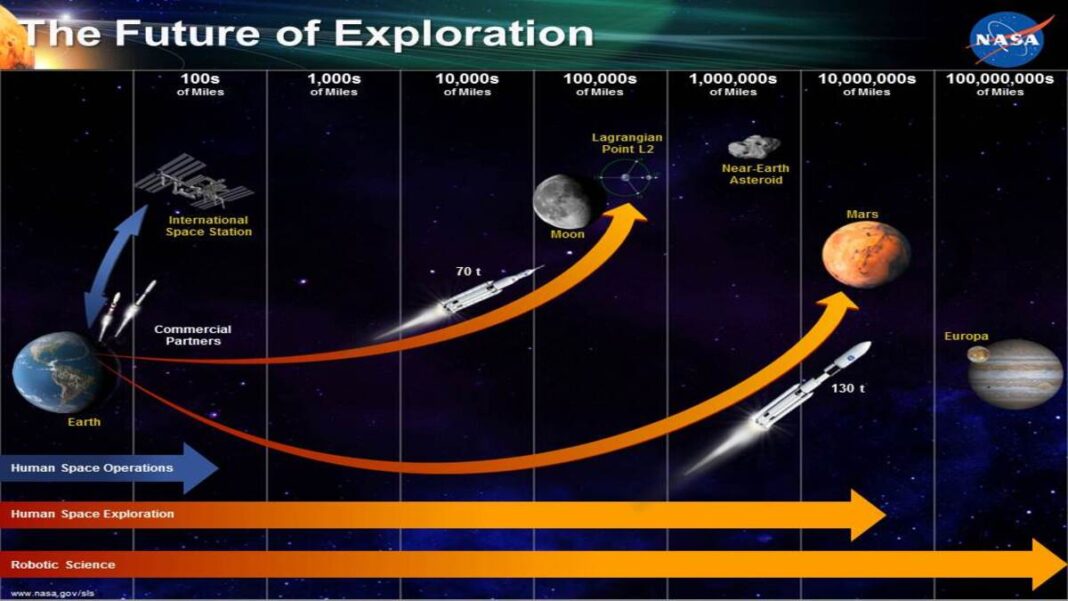INDIA: Space exploration has long been a subject of fascination, which acts as a fusion of curiosity and consciousness for people all around the world. From the first manned missions to the moon to the recent Mars exploration, countries across the globe have invested significant resources in space exploration.
In this article, we will compare the space budgets of different countries in 2022, including the United States, China, Japan, France, Russia, Germany, the European Union, and India, using data from Statista.
USA

The United States has been a leader in space exploration since the inception of the National Aeronautics and Space Administration (NASA) in 1958. According to Statista, in 2022, the United States had the largest space budget, allocating $62 billion to space exploration. This budget includes funding for ongoing programs like the Artemis lunar exploration program and the Mars Sample Return mission.
China
China is a relative newcomer to the world of space exploration but has quickly become a major player in the field. The China National Space Administration (CNSA) was established in 1993 and has since sent multiple missions to the moon and developed its own space station. In 2022, China allocated $11.9 billion to space exploration, reflecting a significant increase from the previous year’s budget.
Japan
Japan’s space agency, the Japanese Aerospace Exploration Agency (JAXA), has been involved in space exploration since the 1960s. In recent years, JAXA has focused on developing technologies for lunar exploration and asteroid mining. According to Statista, in 2022, Japan allocated $4.9 billion to space exploration.
European countries and the EU
France’s space agency, Centre National d’Etudes Spatiales (CNES), has been involved in space exploration since the 1960s. In 2022, France allocated $4.2 billion to space exploration, which included funding for programs like the Ariane rocket and the Galileo satellite system.
Russia has a long history in space exploration, having launched the first satellite, Sputnik, in 1957. Today, Russia’s space agency, Roscosmos, is responsible for the country’s space activities. In 2022, Russia allocated $3.42 billion to space exploration, which included funding for the development of a new heavy-lift rocket, the Angara.
Germany’s space agency, Deutsches Zentrum für Luft- und Raumfahrt (DLR), is involved in a wide range of space activities, from earth observation to planetary exploration. According to Statista, in 2022, Germany allocated $2.5 billion to space exploration, which includes funding for programs like the Mars Sample Return mission.
The European Union (EU) has a dedicated space program, the European Space Agency (ESA), which is responsible for the space activities of EU member states. In 2022, the EU allocated $2.6 billion to space exploration, which includes funding for programs like the Galileo satellite system and the ExoMars mission.
India
India’s space agency, the Indian Space Research Organisation (ISRO), has made significant strides in space exploration in recent years. In 2022, India allocated $1.9 billion to space exploration, which includes funding for the Chandrayaan-3 lunar mission and the Gaganyaan, manned spaceflight program.
In terms of upcoming missions, ISRO has several projects in the pipeline, including:
Gaganyaan: This is India’s first human spaceflight program, which aims to send three astronauts into space for a period of five to seven days. The launch is currently planned for 2024.
Aditya-L1: This is an upcoming solar mission that will study the sun’s corona, solar flares, and other phenomena. The spacecraft will be positioned at a special point in space called the L1 Lagrange point, which is located about 1.5 million kilometres from Earth.


Shukrayaan: This is a proposed mission to Venus, which would be India’s first mission to the planet. The spacecraft would study the surface, atmosphere, and ionosphere of Venus.
In conclusion, space exploration remains an expensive undertaking, requiring significant investments in technology, infrastructure, and personnel. The United States continues to lead the world in space exploration spending, followed by China, Japan, France, Russia, Germany, the European Union, and India.
These countries are investing heavily in space exploration to advance science and technology, explore the unknown, and assert their presence in the global arena. As we look to the future of space exploration, it will be fascinating to see what new discoveries and innovations emerge.
Also Read: NASA’s Webb Discovers Young Planet with Unique Features Orbiting Two Stars



